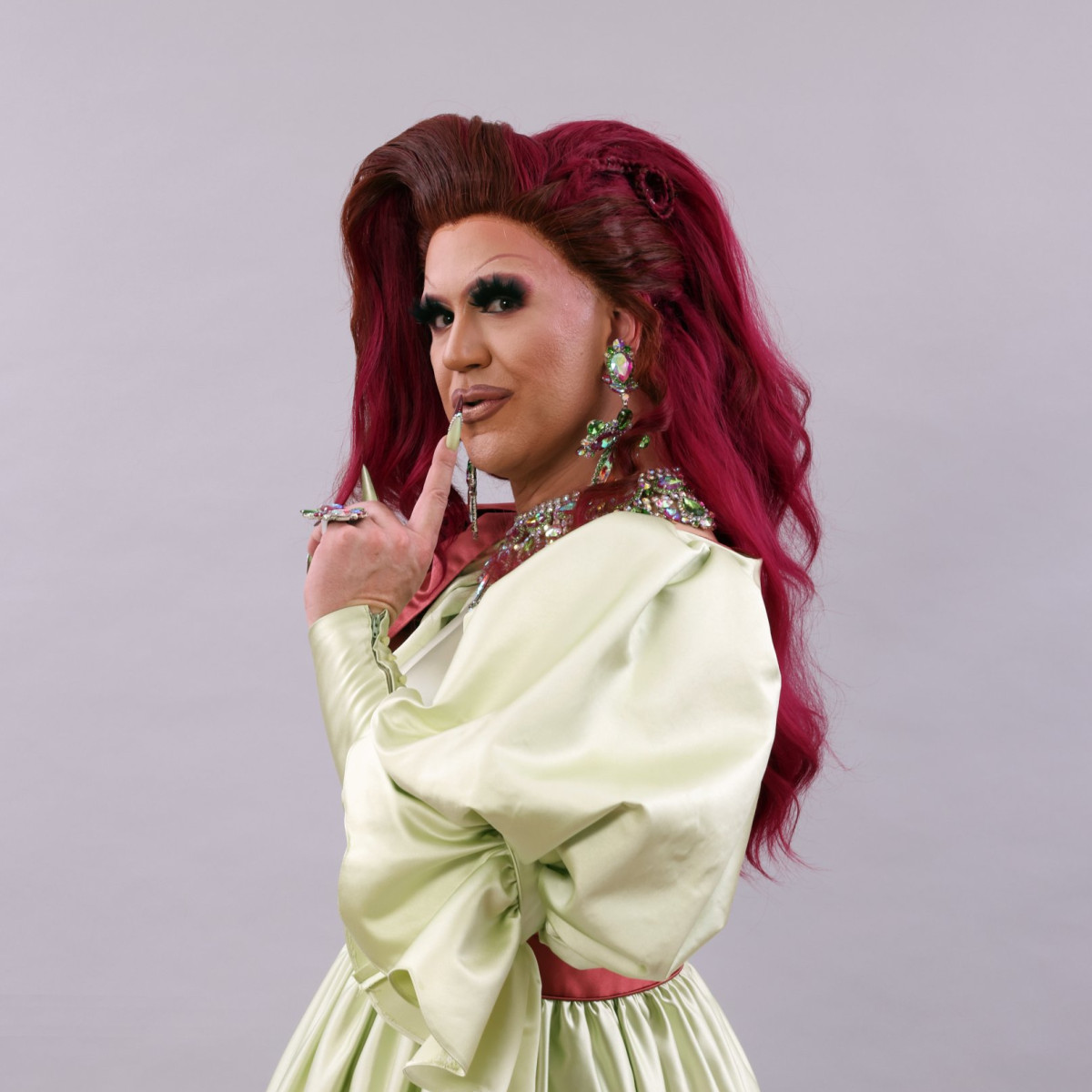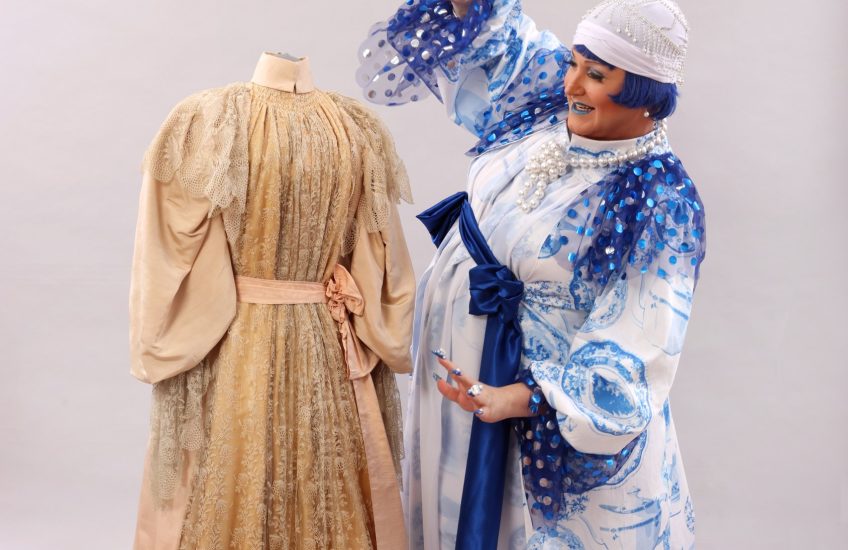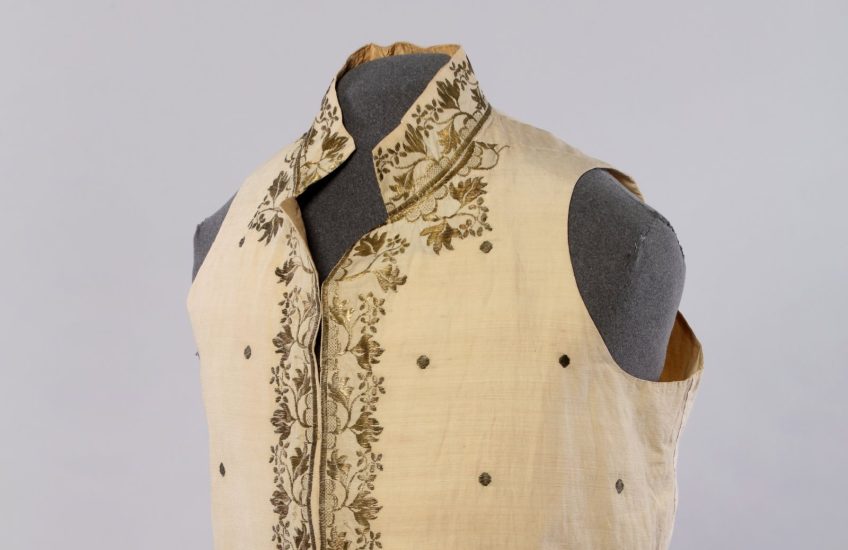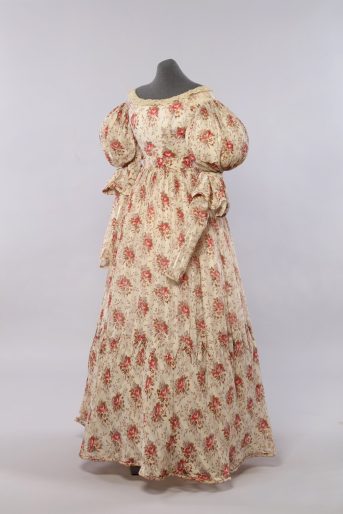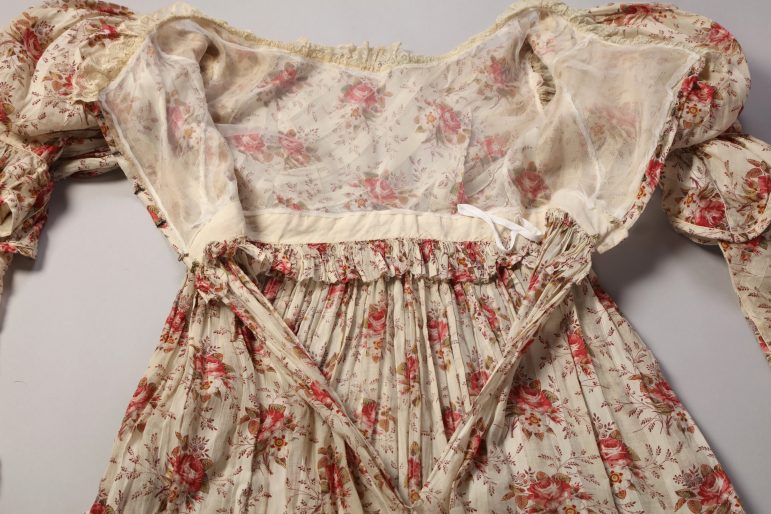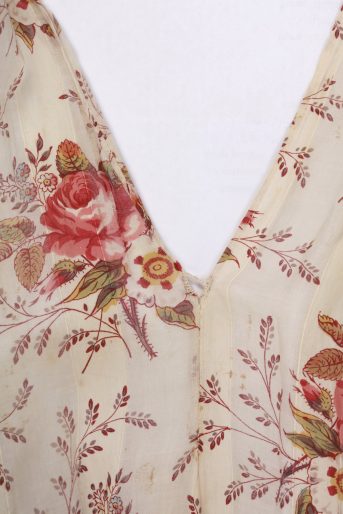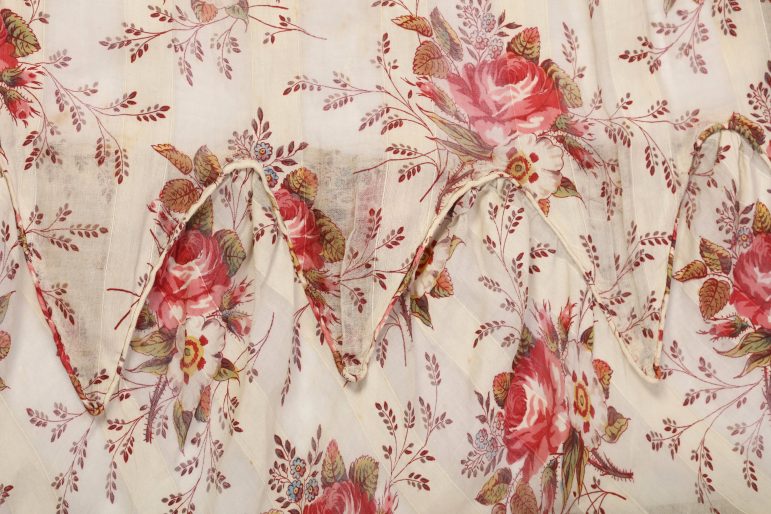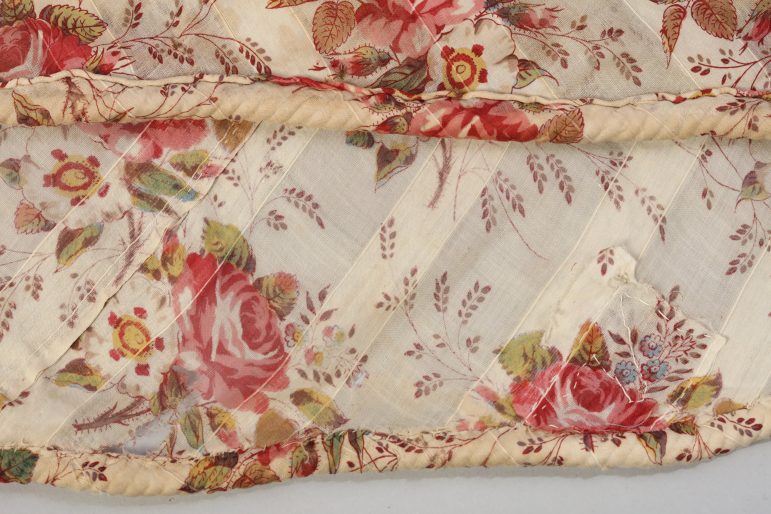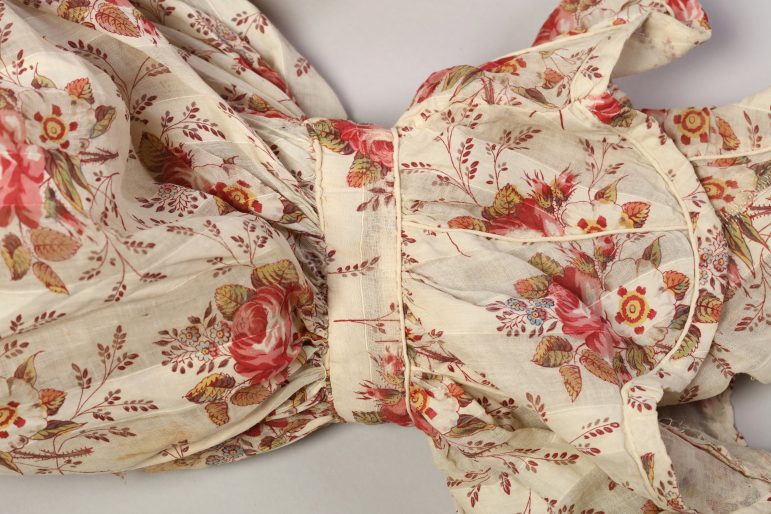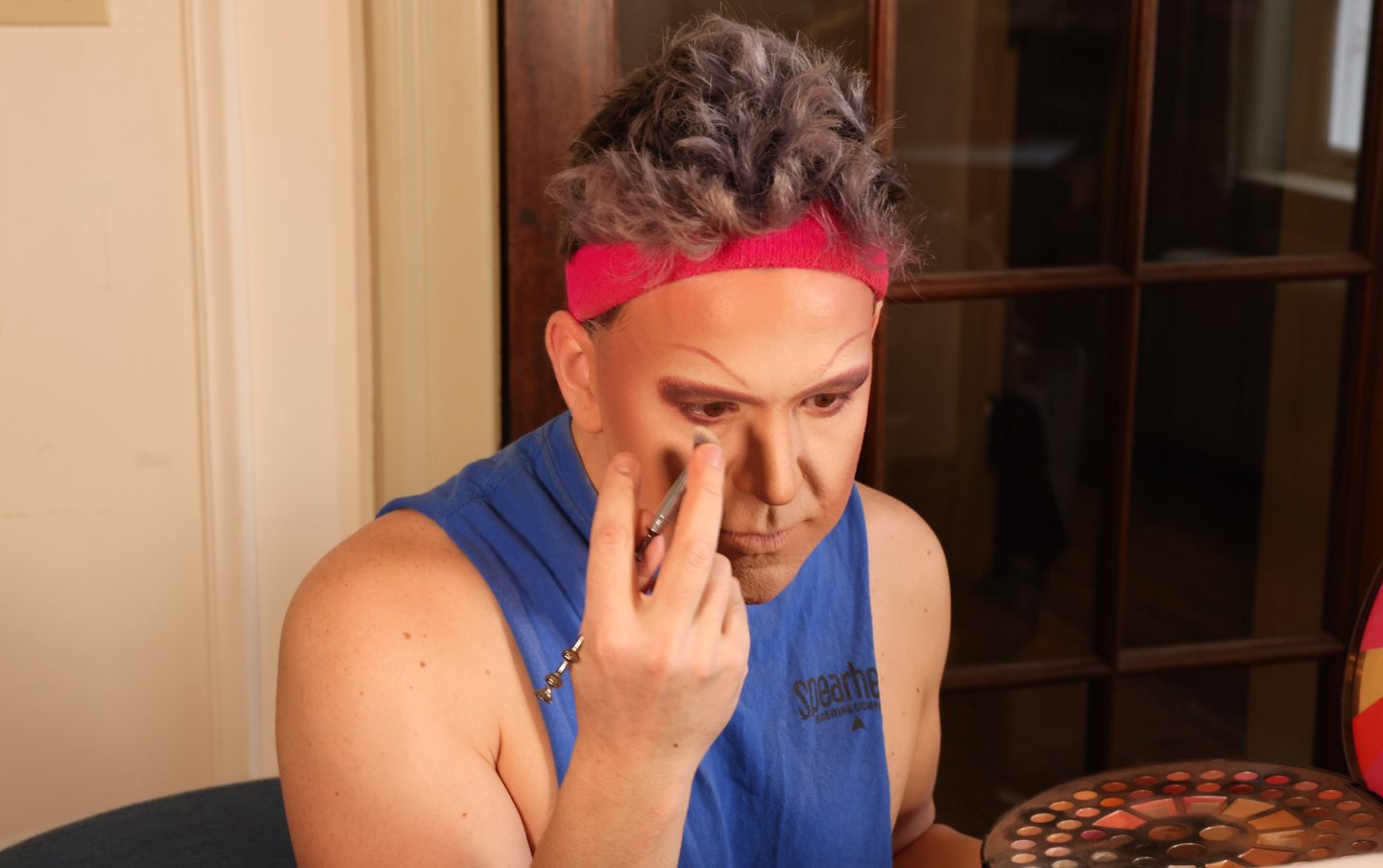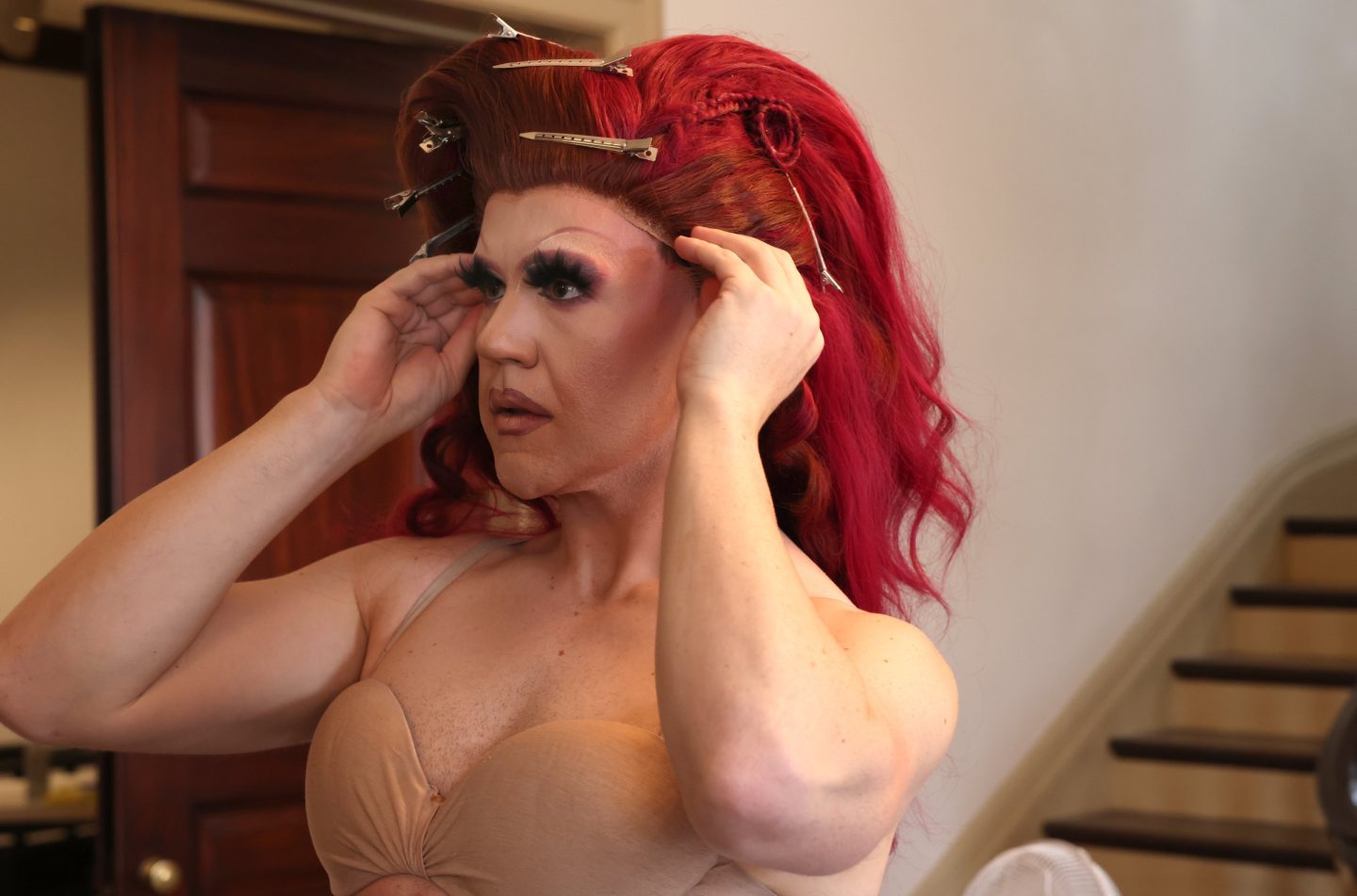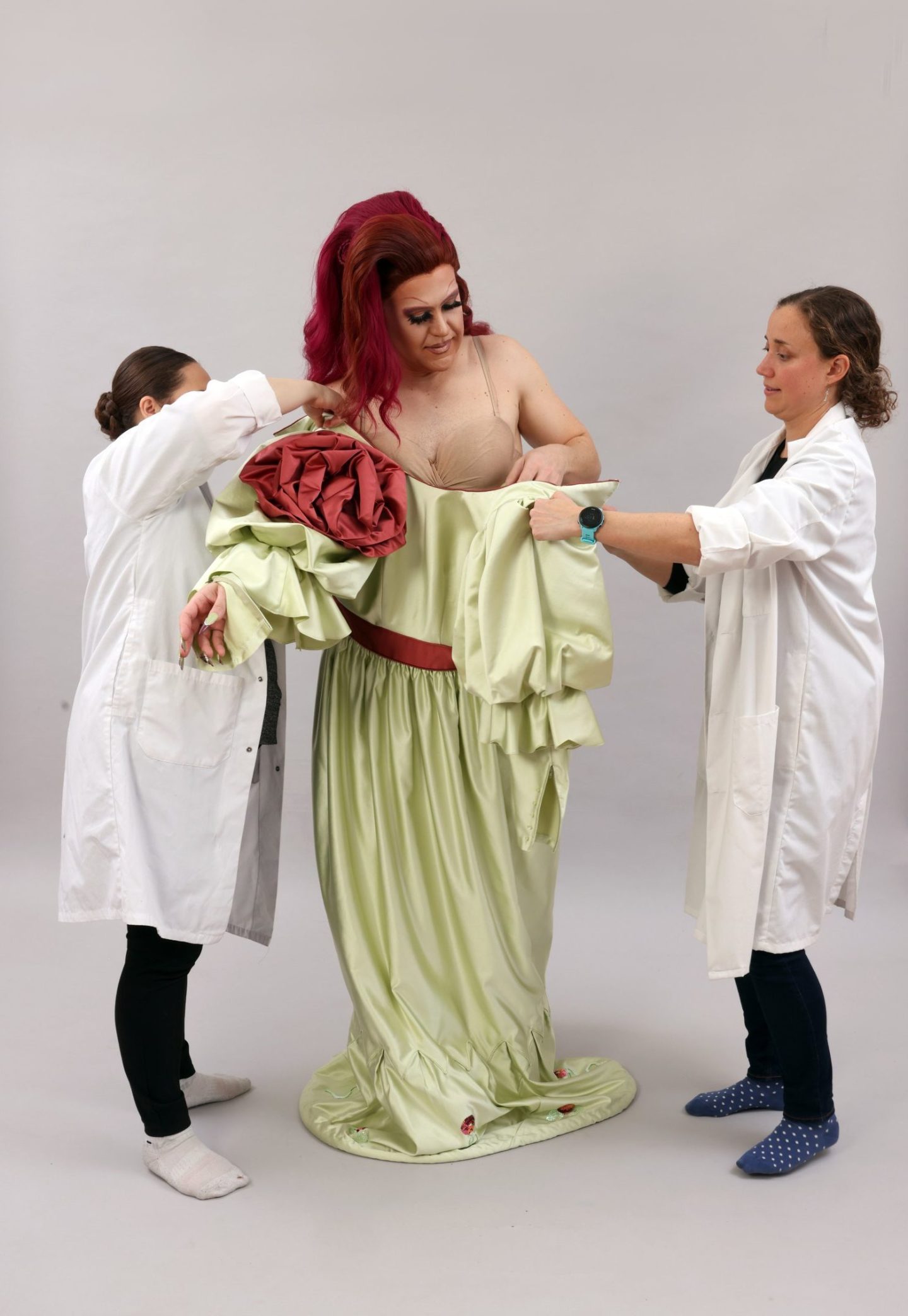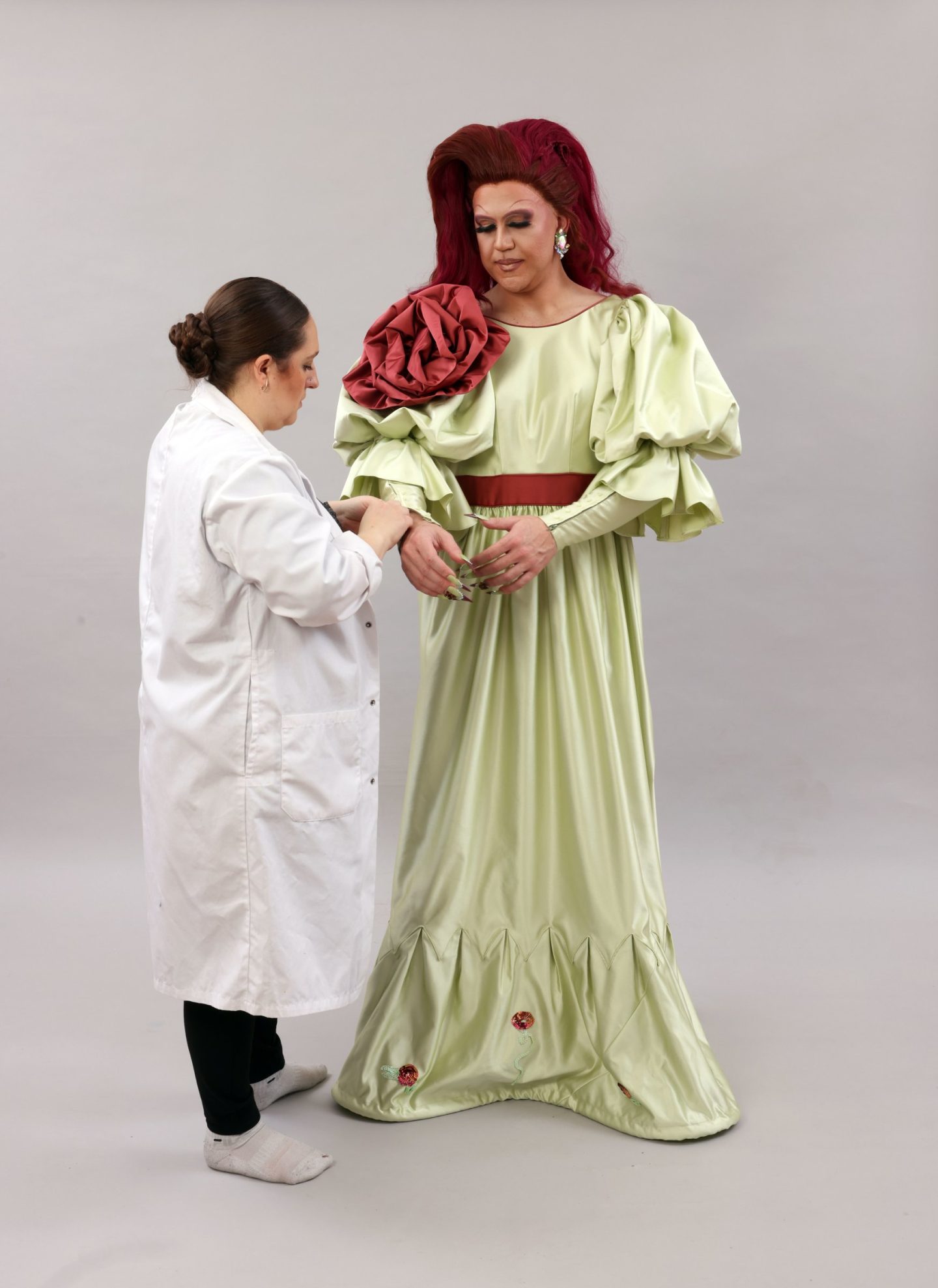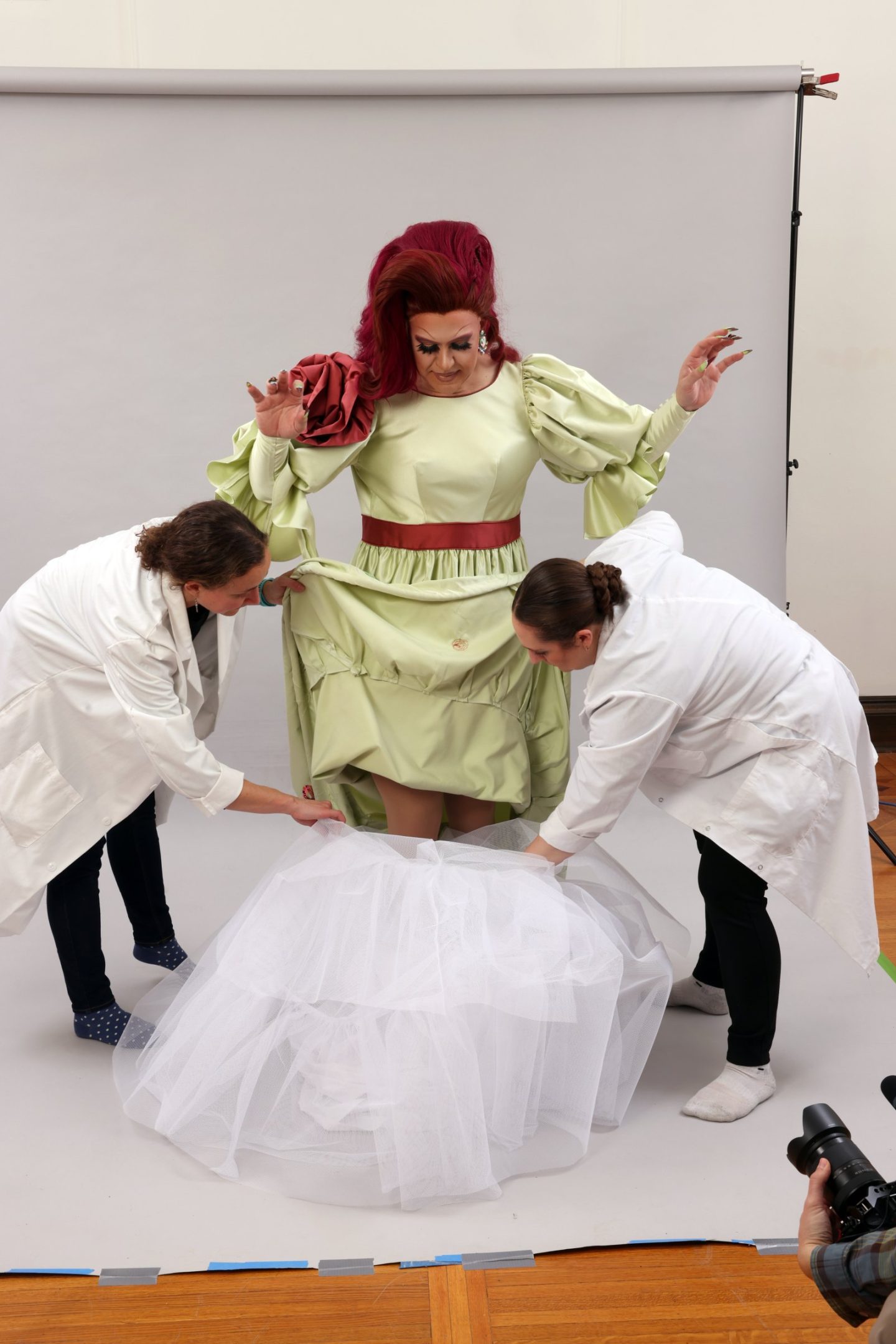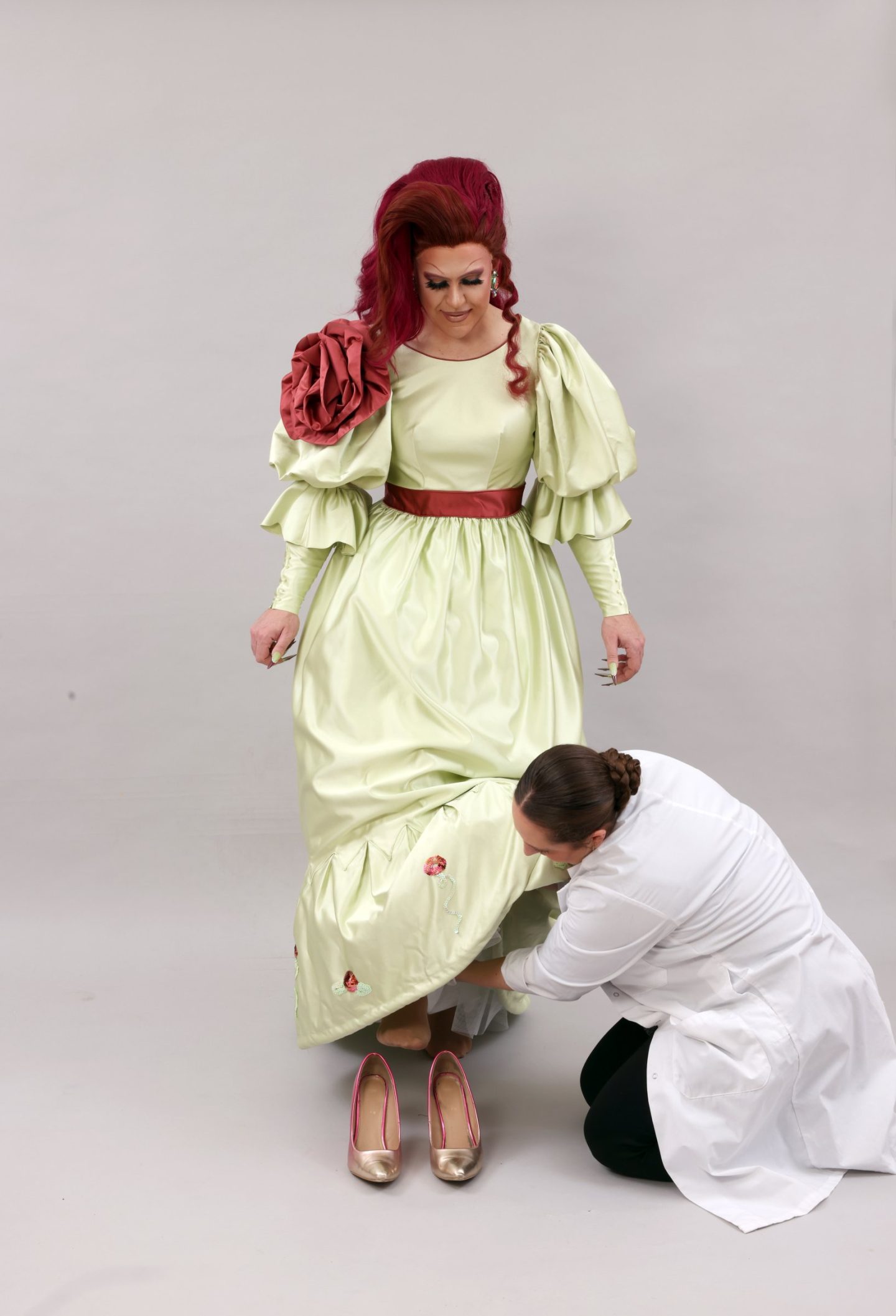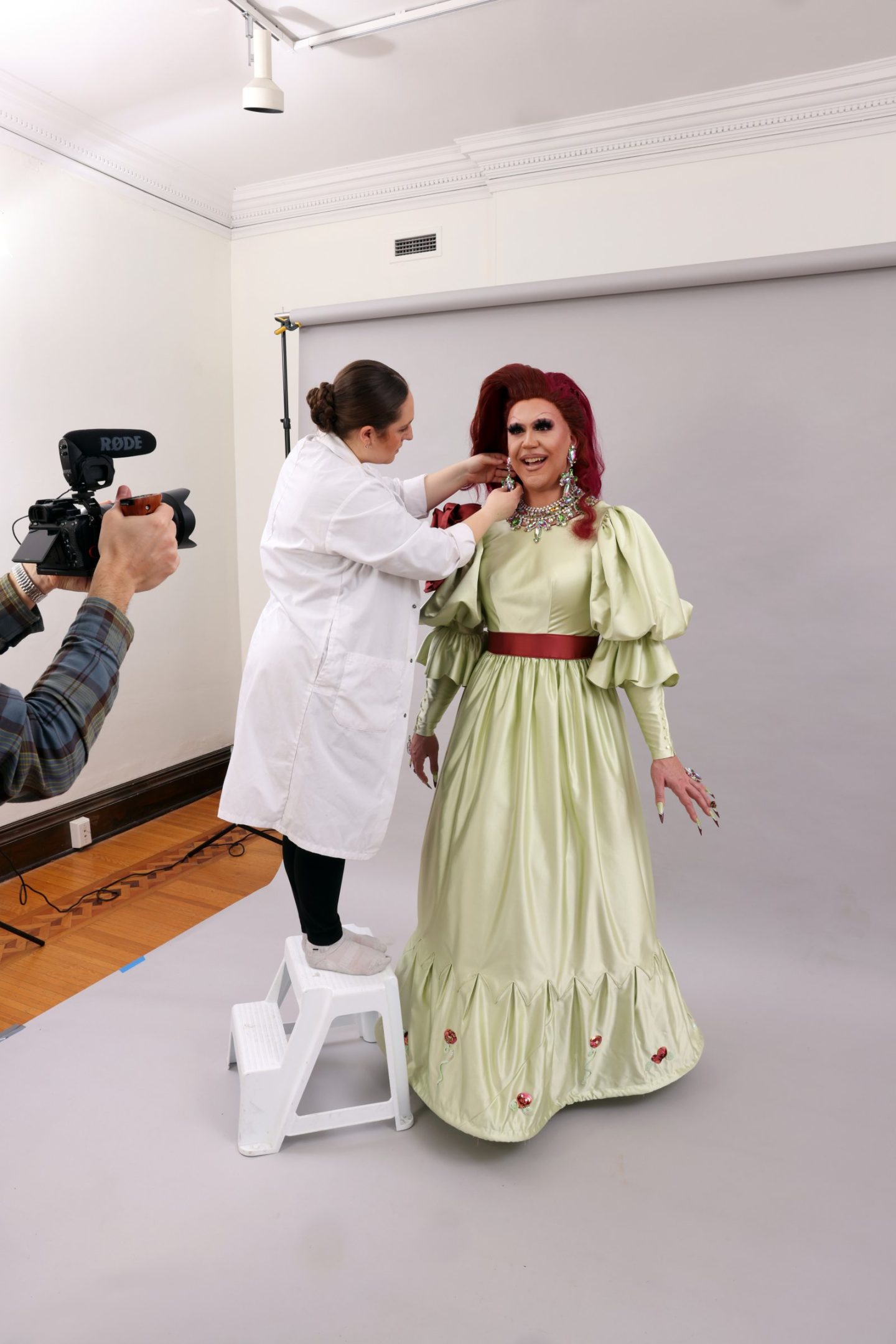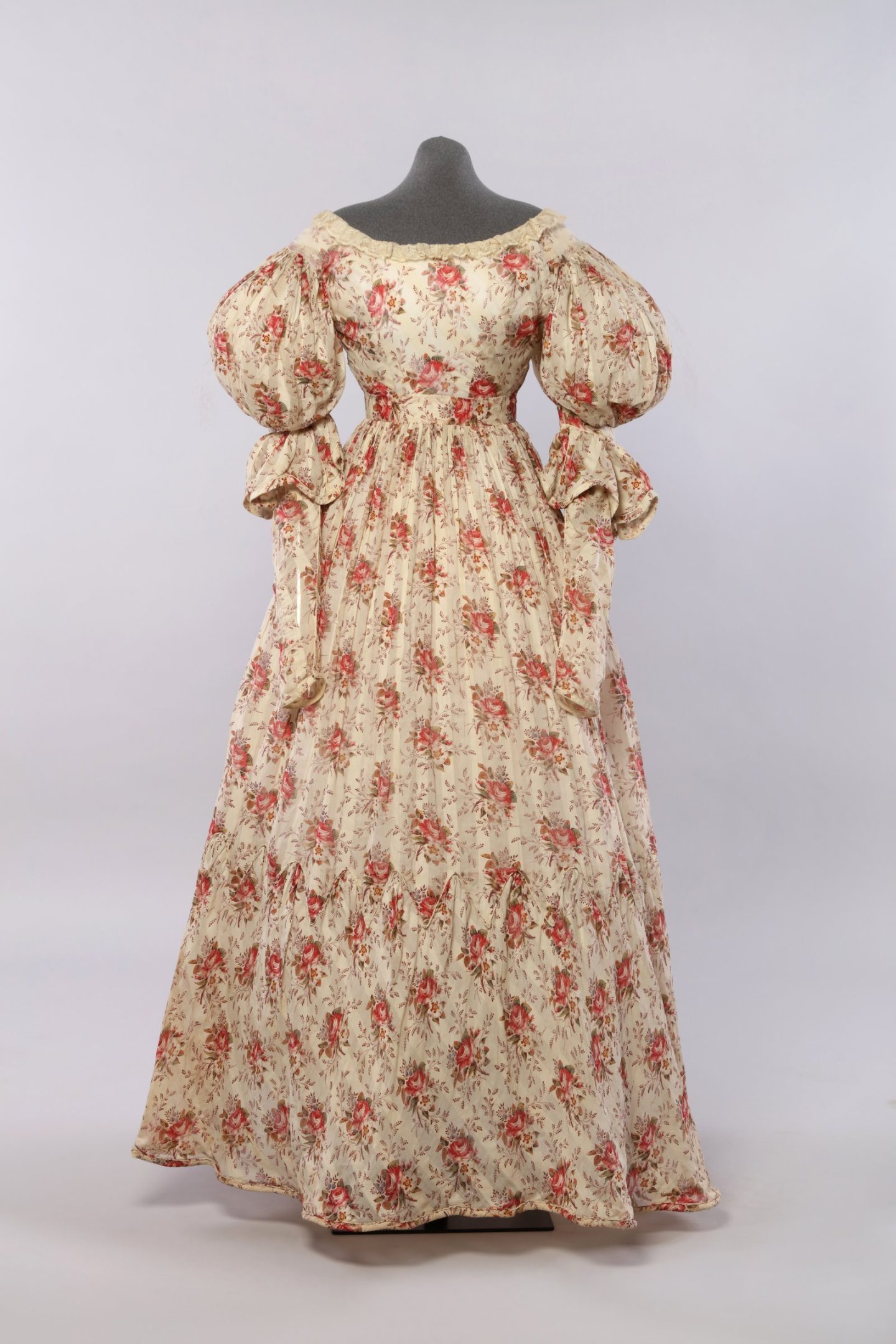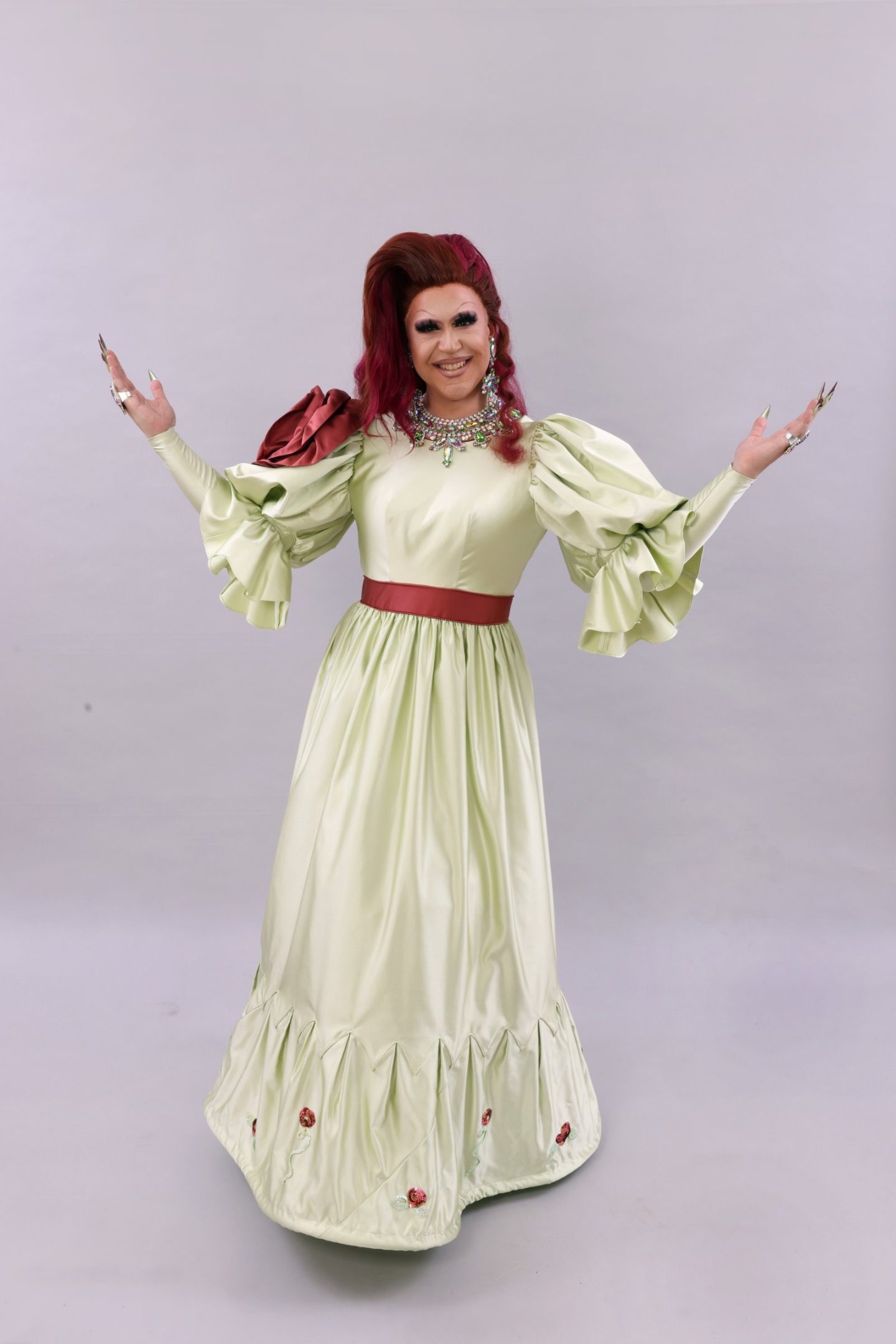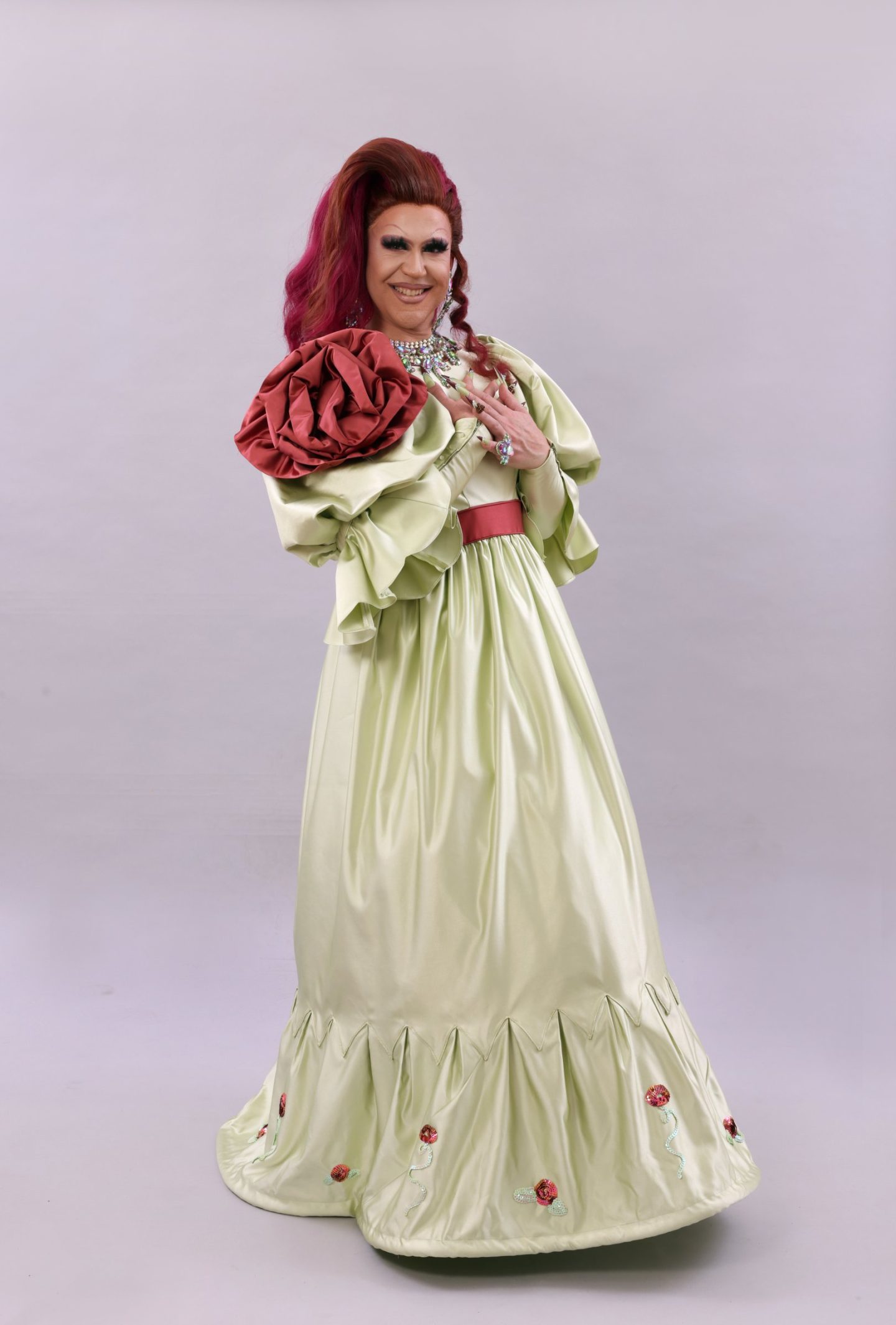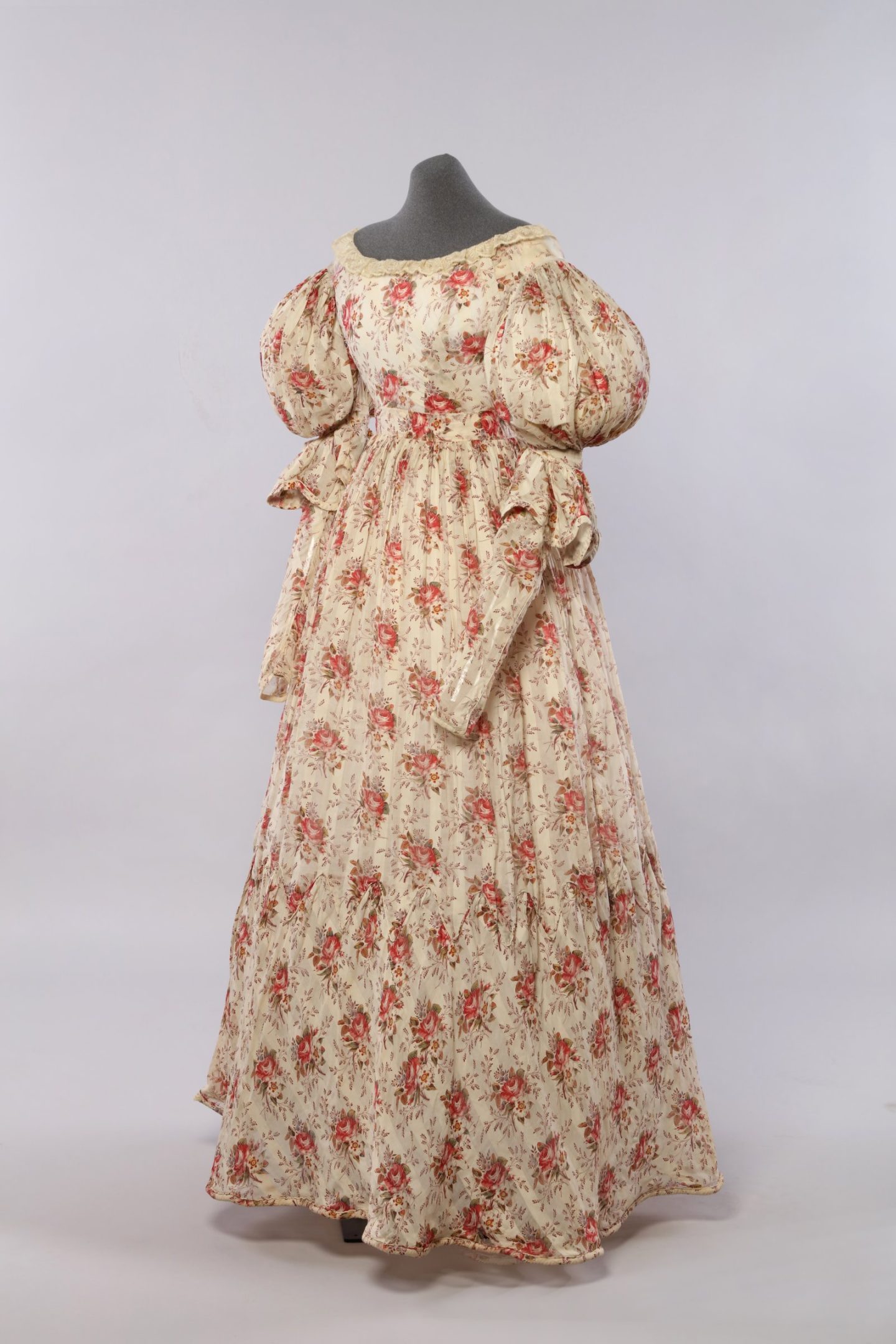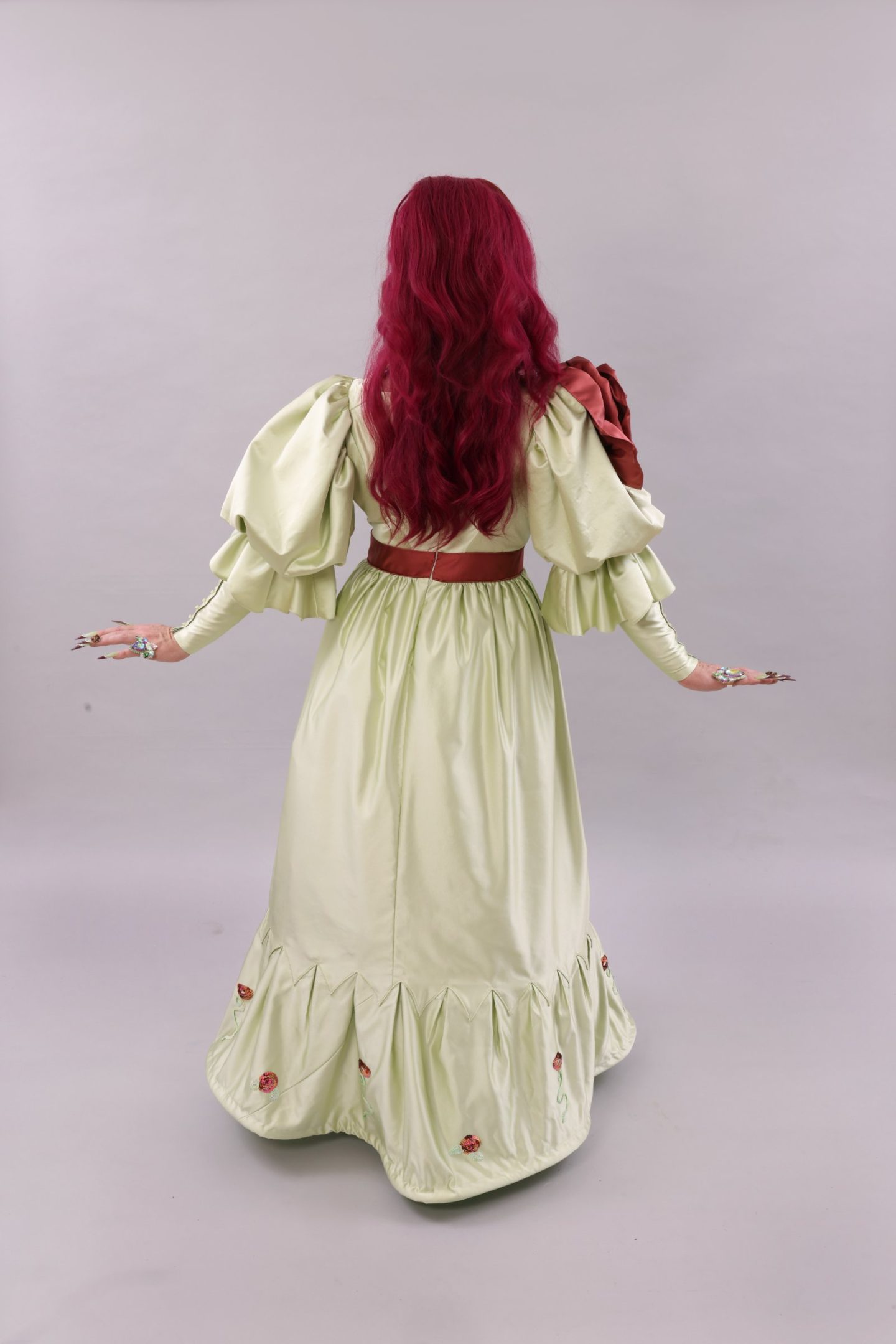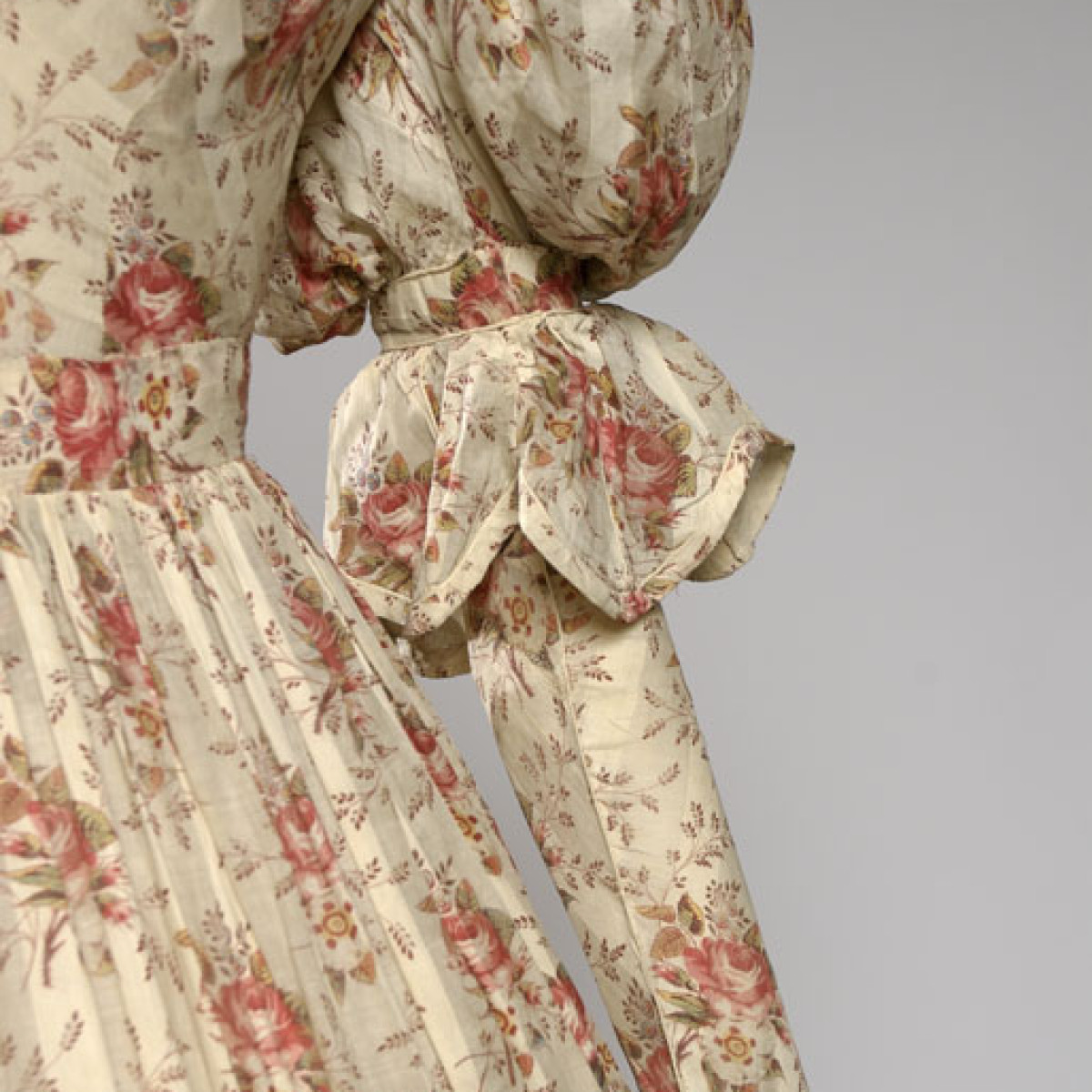
Worn by Helen Levack Mowat (1791–1873)
Re-Worn by Rowena Whey
Day Dress, Europe or North America, c. 1827–1832, roller printed cotton lawn with a woven stripe. Agnes Etherington Art Centre, Kingston. Gift of the Macdonald Family, 1948 (C48-469.1)
Rowena Whey’s Day Dress, Kingston, 2023, synthetic sateen. Made by Jessica Dykins

The Day Dress has been re-interpreted and re-worn by Rowena Whey.
Rowena whey
Rowena Whey is one of Kingston’s premiere drag entertainers, and performs all across Canada. With talents including singing, comedy, dancing, fashion, hosting, makeup, and lip-syncing, she does it all. Rowena’s accolades include being the first drag queen ever pictured on a piece of alcohol sold in the LCBO, with her beer partnership Queen of Wheat with Spearhead Brewing, and the title of “Best Theatre in Kingston” in 2021 and 2022.
Rowena is also responsible for multiple large-scale drag productions and events in Kingston, Ontario. Her shows have entertained thousands, and enlisted stars from such television shows as Rupaul’s Drag Race, Canada’s Drag Race, and Call Me Mother, plus many local and visiting drag performers. Rowena is actively involved in the Kingston community and with 2SLGBTQIA* organizations across Canada. She has organized multiple Drag Queen storytime events in Southeastern Ontario, to teach children and families about acceptance and equality. Rowena has also spearheaded events for various charities/non-profits including Kingston Pride, Dawn House, Rainbow Railroad, SPCA, the ISCWR, Trellis HIV & Community Care, and the CCGSD.
Help Listening
Play Online
- Use the links on this page to choose which track you would like to listen to
- Press the “Play” button to begin
Listen In-Gallery
- Visit agnes.queensu.ca/digital-agnes
- Select the audio track you would like to listen to and press “Play”
Listening to this content will require a Wi-Fi connection or a data plan.
Some charges may apply, please consult your mobile provider)
Other Ways to Listen
Tap or click on “Transcript” under each track to read or download the full transcript of each audio commentary.
